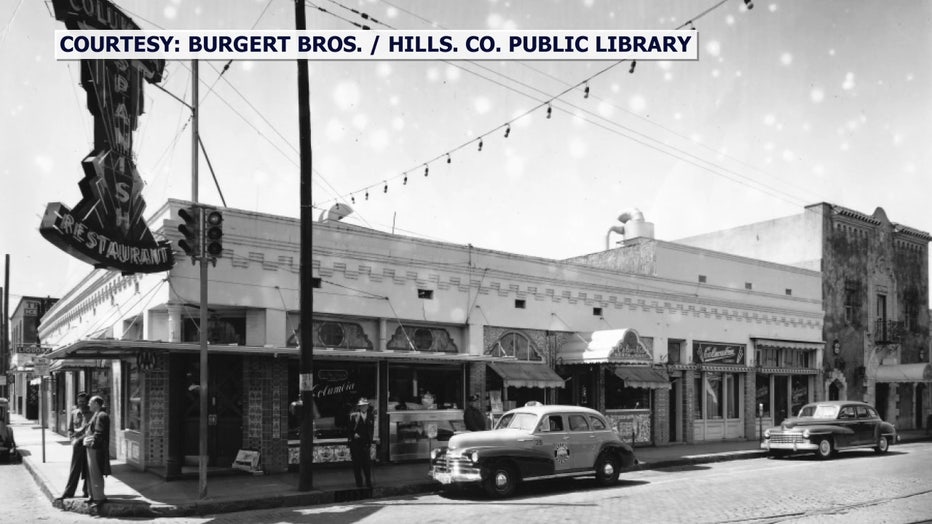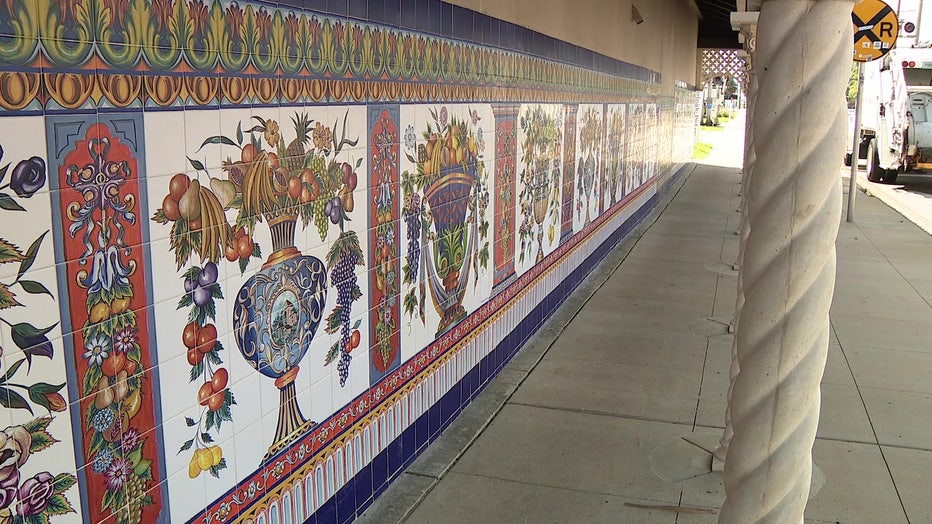The Columbia Restaurant's famous painted tiles replaced with historically accurate digital prints
YBOR CITY, Fla. - The famous Columbia Restaurant that opened in 1905 is a landmark in Ybor City.
"On this side we have a little over 5,000, so I'm going to go ahead and say about 20,000 tiles," said Casey Gonzmart, Jr.
He's the 5th generation of a family that's handed down the restaurant to sons and daughters for more than a century. But, Casey knows where to look on the family tree for the man who coated the restaurant with the famous tile.
His grandfather, Cesar Gonzmart, a performing violinist who combined art with food in his own unique way chose Spanish tile instead of a new oven for the restaurant's kitchen.
READ: Hotel Floridan’s new name gives nod to the olden days as $30 million renovation nears completion
Casey's father wanted the oven. Casey's grandfather wanted the tile.
"The food is going to come out the same whether I buy you that oven or I don't buy you that oven, but for generations people are going to come to this restaurant and take pictures of these tiles," said Cesar according to Casey, Jr.

A historical photo shows what few remember, The Columbia before it was covered with tile.
It was plain. But, by the 1970s photos and postcards show the tiles that have been the backdrop for thousands of pictures taken on memorable visits to The Columbia.
READ: Tampa homes built in 'The Scrub' given historical status by city council
As time passes and the years take their toll, even on fine Spanish tiles, many were chipped and weathered. The artists who created them decades ago have passed away.
The problem was how to replace Cesar's tiles. It was time for a family meeting about a matter of great importance.
"Myself, my cousin, my uncle, my father, everyone gave their inputs of what they liked," shared Casey, Jr.
What they liked was a new process to produce old-looking tiles. Artist Harris Romaner created paintings based on the surviving original tiles. They are of the same style and colors with lots of flowers, fruit, and vases, with occasional gargoyles mixed in.

Modern technology made the process of replacing tiles much easier.
"We wanted to make it look like it was historically accurate," said Romaner. Then came a twist that Cesar would have never dreamed of. Digital copies of the paintings were made, and a specialty printer then transferred the prints onto tiles.
"This is actually done in inkjet," explained Romaner. "The same way you would do a paper output."
Now, with a library of digital prints and blank tiles, broken ones can be replaced quickly and relatively inexpensively. I asked Casey, Jr. what he thinks his grandfather would think of this.
"I know he'd be pleased. It looks amazing," said Casey, Jr. "It looks exactly the way it used to look."

